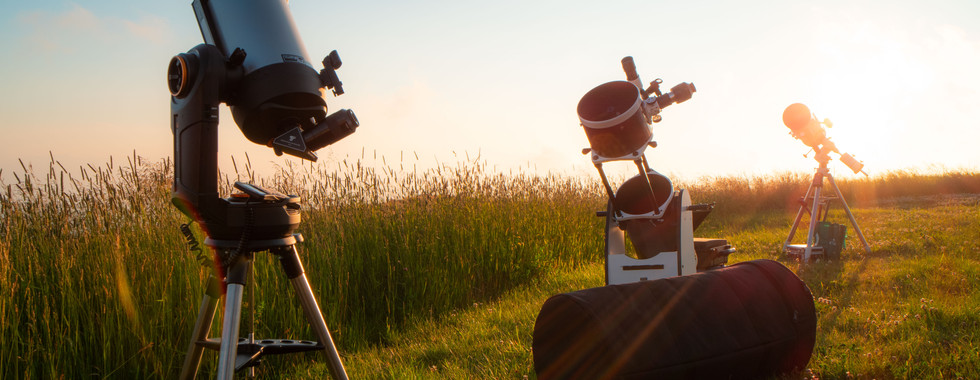Samyang AF 18mm f/2.8 FE Full Review
- Robert Ruckhofer
- Sep 13, 2023
- 5 min read
The Samyang 18mm f/2.8 lens for Sony-E mount is a fixed aperture, wide-angle lens that is well-suited for landscape, architecture, and astrophotography. It offers a wide maximum aperture of f/2.8 to capture promising results even in challenging lighting conditions. The compact and lightweight design makes it convenient to use for landscape astrophotography, even with the smallest travelling tracking mounts like for example the Vixen Polarie U or Skywatcher SAM. I'm using it combined with my astro-modified Sony a6300 APS-C mirrorless camera.
This is primarily a review focused on astrophotography. I will also provide the most important information about using this lens for daylight photography, but please keep in mind that I am not an expert in this field. All of the example images were taken by me using my astro-modified Sony a6300 camera, even the daylight shots that are included, which adds complexity and places high demands on the lens optics since astro-modified cameras capture wavelengths that the lens has not been specifically optimized for.
Most important specs:
Price: Around 350€ - 400€
Focal Length: 18mm
Maximum Aperture: f/2.8
Minimum Aperture: f/22
Lens Mount: Sony-E Mount
Angle of View: 100.1°
Optical Construction: 9 elements in 8 groups
Number of Aperture Blades: 6
Minimum Focus Distance: 0.25m
Filter Diameter: 58mm
Dimensions: 63.5mm x 60mm
Weight: approximately 145g
Daylight Photography
I have used the Samyang 18mm lens on several occasions to test and capture its performance in daylight, and there are a few important things you might want to know:
Generally speaking, I believe that you usually get what you pay for. However, when it comes to the Samyang 18mm lens, I am not so certain about that. You might get more than you expect for the price, or unfortunately, you might end up with much less.

Why do I hold this opinion?
Well, it's because this specific Samyang 18mm lens is not the first one I have owned. The initial lens I received had significant optical issues that I simply could not live with, so I returned it after only a couple hours of testing.
After a few days of reconsideration and realizing that there were no viable alternatives in this price range, I decided to give Samyang another chance and purchased the lens again, but this time from a different vendor. Thanks to Jeff for the quick delivery, this time around, the lens is performing much, much better.
Even though I am using an astro-modified camera, I was pleasantly surprised by the
sharpness of my second Samyang 18mm lens. The only other lens I can somewhat compare it to is my Sony Zeiss 16-70mm f/4 (SEL16-70Z), and at f/4, the Samyang performs remarkably well. It even exhibits less chromatic aberration (visible at the black/white edges), and particularly in the corners, it is noticeably sharper which actually is a requirement for good looking stars edge to edge.

Samyang vs. Sony
Astrophotography

the milky way - about 2 hr total exposure time - iso400 60sec - crop
Flatfield
Like every experienced astrophotographer, the first thing I did was to test the lens at its fully open aperture, f/2.8. One thing I noticed was that the lens does exhibit some vignetting, although it is not very strong. However, the vignetting extends quite far into the middle of the image. If you are planning to shoot mosaics with this lens, I highly recommend using flat frames to minimize gradients across the final image.
Representation of the vignetting at f/2.8 - flatfield image, floor, and clouded sky
Star Test
I also conducted a test where I used an artificial star to evaluate the optical quality of the lens. In the left image, you can see the star shapes from edge to edge, and the right image shows the classic "star test", which provides valuable insights into the lens's optical performance and any given aberrations. Upon analysing the second image, I noticed a slightly uneven colour gradient present across the 5-second exposure, as well as across the left and right regions of the out-of-focus discs. These discrepancies could potentially be attributed to minor misalignments between lenses or lens groups. Additionally, there are multiple concentric "zones" visible and a lack of distinct separation between diffraction rings. However, the in-focus "airy-disc" pretty much appears to be concentrically round and devoid of coma or astigmatism, which is a crucial aspect for good star shape. Although these tests are not without their imperfections, considering the lens's price point, these results are actually looking quite promising.
Samyang 18mm at f/2.8 - left: star shapes edge to edge - right: "star test"
Real World Testing

The real-world aberrations appear to be quite similar to what I observed during my testing with the artificial star. I have noticed that the upper right corner exhibits a slightly more elongated star shape. The stars appear slightly bloated and larger towards the edges. However, when I captured some test shots for a 4x4 mosaic, Astro Pixel Processor seamlessly stitched everything together without encountering any issues. I haven't attempted to correct the "tilt" issue on this lens yet, because I know that my camera has a slightly tilted sensor anyways.
PixInsight aberration inspector
The handling of the lens during nighttime is very straightforward, and I believe it can even be operated with thick gloves. It features a single focus ring, making it very easy to use. The aperture, on the other hand, is controlled through the camera. Samyang has opted for a linear STM motor for focusing the lens, which is an excellent choice for a lens designed for landscape and astrophotography. Even when manually focusing, the experience is smooth and easy. In fact, I find it to be even better and more precise than my previously owned fully manual Samyang 12mm lens.

Samyang 30sec - f/2.8 - ISO 1600 - test shot directly out of camera
One annoying problem I encountered in the past with many camera lenses is that the focus tends to be unstable over the course of the night or when the camera is being moved. Even with my manual lenses, I always had to tape down the focus and aperture rings to prevent them from shifting. However, with the Samyang 18mm lens, I have not experienced this issue at all so far. While it is still important to be cautious not to accidentally touch the focusing ring, the lens itself is so compact that, at least in my experience, this rarely occurs at all. The image below is an integration of 42 images with 60 seconds exposure time each. I did not feel the need to use a Bahtinov Mask for focusing and I also did not have to refocus the lens. In fact I did not refocus it the whole night and it just worked out to be fine.

42 x 60 sec - ISO 400 - F/2.8 - stacked, slight background extraction + saturation
Conclusion
Pros:
lightweight, compact design
metal lens mount
easy to use
price to performance
Cons:
quality control issues
focus ring is slippery plastic
really cheap dew shield/lens hood
Overall, I believe the Samyang 18mm F/2.8 lens is a valuable addition to one's collection. It offers versatility, portability, and affordability, making it a convenient option to carry around. One of its key advantages is its suitability for landscape astrophotography, as it can be used with even the smallest tracking mounts without requiring additional accessories like counterweights.
In terms of imaging quality, the lens performs adequately for casual landscape photography. However, if you are specifically looking for a lens for landscape photography, there might be better alternatives available in the market.
Astrophotography is an area where the Samyang 18mm F/2.8 lens truly excels. It is capable of producing round stars and offers excellent handling. It stands out as a great choice for astrophotography due to its capabilities and the lack of direct competitors in terms of value for money.
Buying recommendations
One area where Samyang really should improve is quality control for this lens. It would be advisable to thoroughly check the image quality if purchasing it second hand. If buying new, it is advisable to consider purchasing from a vendor with a robust return policy. This will help ensure that you have the option to return the lens if any complications arise or if you are not satisfied with the quality. By choosing a vendor with a good return policy, you can have peace of mind knowing that you have the opportunity to exchange or return the lens if needed.
































Comments